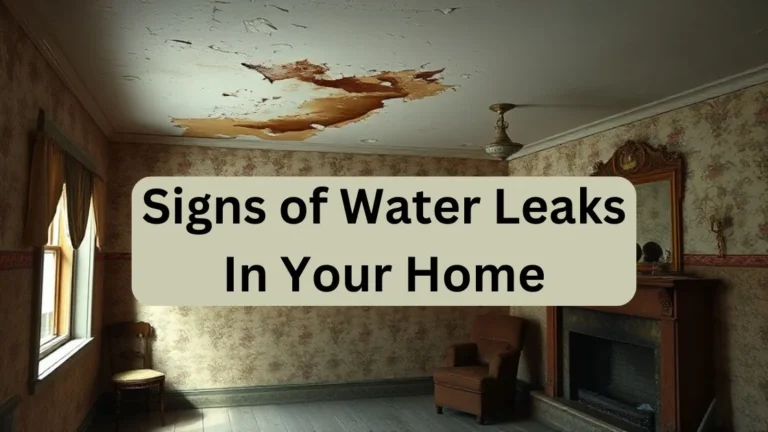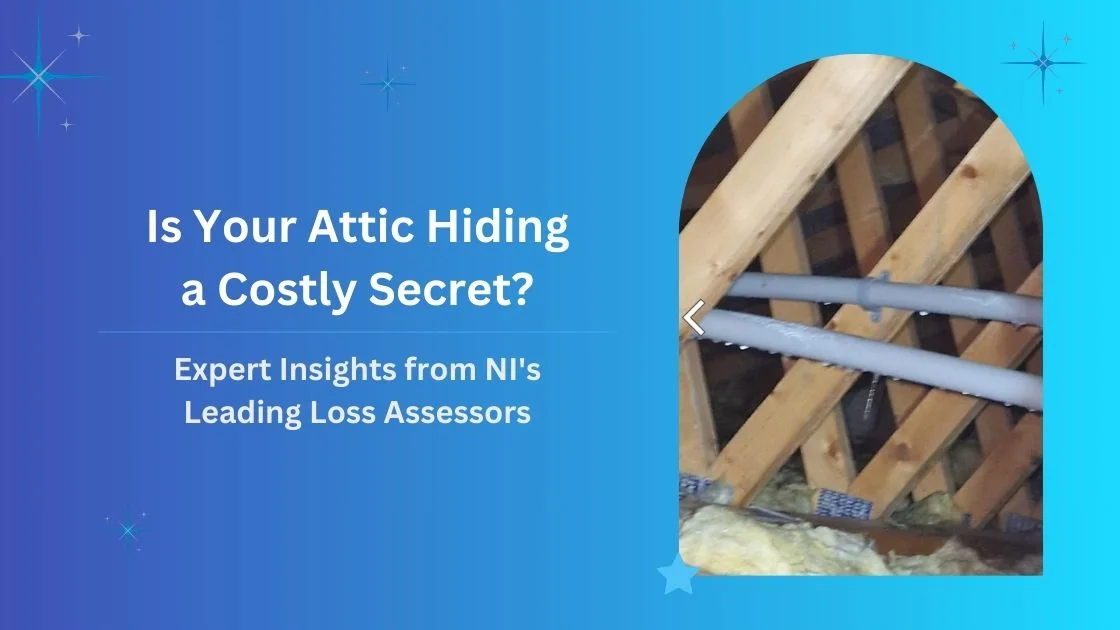Water leaks can lead to major headaches and costly repairs if not addressed promptly. But how well do you really know the different types of water leaks that can occur in your home? Understanding the signs and causes of these leaks is crucial in preventing damage and protecting your investment.
From dripping taps to hidden underfloor leaks, water leaks can manifest in various forms throughout your home. Not all leaks are created equal, and recognising the type of leak you are dealing with can make all the difference in managing repairs effectively.
In this article, we’ll explore the different types of water leaks you might encounter in your home, helping you identify issues before they spiral out of control.
Key Takeaways
- Water Softeners: Leaks can occur from valves or hoses, leading to significant water wastage within the home.
- Toilet Leaks: Often due to flange or valve issues, these leaks can waste up to 90 gallons of water daily.
- Supply Line Leaks: Resulting from pipe corrosion, they can cause extensive damage if not addressed promptly.
- Foundation Leaks: Poor drainage can lead to leaks that threaten the structural integrity of the home.
- Swimming Pool Leaks: Cracks or faulty fittings can create leaks, requiring immediate attention to prevent water loss.
Types of Water Leaks
Water leaks can manifest in various forms within a home, each presenting unique challenges and potential consequences. Common types of water leaks include those from water softeners, toilets, supply lines, foundations, and swimming pools.
For instance, water softener leaks often arise from valves or hoses, leading to substantial water waste. Toilet leaks, frequently caused by issues with the flange or valve, can waste up to 90 gallons a day.
Water supply line leaks usually result from pipe corrosion, while foundation leaks stem from poor drainage, compromising structural integrity.
Consequences of Water Leaks
The repercussions of water leaks extend far beyond mere inconvenience, posing significant threats to both property and health. Unresolved leaks can lead to extensive structural damage, weakening foundations and walls, which may result in repair costs averaging thousands of pounds.
Furthermore, the excess moisture creates a perfect environment for mould growth, capable of developing within 24 hours of exposure. This can pose serious health risks, particularly for vulnerable individuals. In addition, standing water invites bacteria and pathogens, further compromising household safety.
The financial implications are notable as well, with inflated utility bills and a potential decrease in property value, where claims often exceed £10,000. Prompt detection and repair of leaks are essential for safeguarding both your home and well-being. Learn more: Common kitchen sink leak causes.
Finding Water Leaks
Identifying water leaks early is essential to prevent extensive damage and costly repairs.
Homeowners should be vigilant for signs such as unexplained water stains, unusual noises, or damp areas, which may indicate hidden leaks.
Employing specialised tools and seeking professional assessments can enhance detection efforts, ensuring comprehensive monitoring of plumbing systems.
Signs of Water Leaks
Numerous signs can indicate the presence of water leaks within a home, often serving as early warning signals for potential plumbing issues.
Water stains on ceilings, walls, and floors are clear indicators that merit immediate leak detection efforts. A sudden spike in water bills, without any change in usage, often points to hidden leaks.
Furthermore, musty odours or mould growth in basements and bathrooms suggest excessive moisture from leaks, while discoloured grout or loose tiles around sinks and showers may indicate issues lurking behind walls.
Regular moisture assessment around appliances, particularly dishwashers and washing machines, is essential for identifying early signs of leaks before they escalate into costly repairs, ensuring the safety and comfort of your living environment.
Tools for Detection
To effectively locate water leaks within a home, a variety of specialised tools are available that enhance detection accuracy and efficiency.
Infrared technology, such as infrared cameras, reveals temperature variations behind walls and ceilings, indicating hidden leaks.
Acoustic tools employ sound waves to detect leaks in pipes, making them particularly valuable for underground and wall-hiding scenarios.
Moreover, moisture meters measure moisture levels in building materials, pinpointing affected areas.
Pressure testing further assesses the integrity of plumbing systems by evaluating pipes and joints under controlled conditions.
For comprehensive leak detection, professional services often document findings with photographs, providing essential evidence for insurance claims and future reference.
Implementing these tools can empower homeowners to address leaks promptly, safeguarding their properties.
Professional Leak Assessment
While the tools for detecting water leaks are invaluable for homeowners, professional leak assessment services elevate detection to the next level.
By implementing advanced leak detection technologies, such as acoustic and thermal imaging, trained technicians expertly locate hidden leaks that traditional methods might miss. Their meticulous inspections often reveal:
- Hidden mould growth that can affect your health
- Discolouration that signals potential structural damage
- Moisture accumulation leading to costly repairs
- Documentation for insurance claims to ease your stress
Employing moisture mapping techniques, these professionals guarantee minimal disruption to your daily life while efficiently pinpointing leak locations.
Early assessments can save you from significant financial burdens, preventing both property damage and inflated utility bills.
Welcome the peace of mind that comes with professional expertise.
Responding to Water Leaks
When confronted with a water leak, immediate action is crucial to minimise damage; turning off the main water supply should be the first step.
After this, a thorough assessment of the affected areas will assist in identifying the source and extent of the problem, and enlisting the expertise of a professional plumber can ensure accurate detection and effective repairs.
Furthermore, exploring various repair options and committing to regular maintenance can significantly reduce the risk of future leaks.
Immediate Action Steps
Water leaks can quickly escalate into serious problems, making immediate action vital to mitigate damage.
An effective emergency response involves several critical steps:
- Shut off the main water supply to prevent further water damage.
- Assess the affected area for visible signs of damage, such as water stains or mould growth.
- Document the damage and the leak’s source with photographs for potential insurance claims.
- Contain the leak using towels or buckets to minimise water spread.
Taking swift action not only protects your home but also reassures your family that you are in control.
A thorough damage assessment followed by contacting a professional plumber ensures that the leak is properly addressed, fostering a sense of safety and belonging within your space.
Professional Assistance Needed
After taking immediate action to mitigate the damage caused by a water leak, securing professional assistance becomes an essential next step.
Engaging skilled plumbers ensures that the complexities of leak detection and emergency plumbing are expertly managed. These professionals employ advanced technology to identify hidden leaks behind walls or underground, minimising disruption to your home.
Their expertise not only addresses existing leaks effectively but also helps implement preventative measures to reduce the likelihood of future issues.
By consulting a plumber, you gain access to comprehensive services that protect your property from structural damage, mould growth, and escalating utility bills.
Prioritising professional help fosters a sense of security and belonging within your home, safeguarding your investment for the long term.
Repair and Prevention Options
Addressing a water leak promptly is essential for minimising damage and ensuring the longevity of your home. Immediate action includes shutting off the main water supply and contacting a professional for leak detection and repair.
Regular inspections of vulnerable areas can help catch potential issues early, fostering a sense of security within your living space.
To protect your home, consider these preventative maintenance strategies:
- Regularly replace worn hoses and seals
- Conduct routine inspections of pipes and joints
- Install leak detection systems for continuous monitoring
- Schedule professional plumbing assessments
Taking these proactive steps not only prevents future leaks but also cultivates a nurturing environment, ensuring your home remains a safe haven for you and your loved ones.
Plumbing Services and Support
A reliable plumbing service is essential for homeowners facing the threat of leaks and other plumbing emergencies. These services provide timely emergency plumbing assistance to swiftly address urgent leak repairs, minimising damage and costs. Employing advanced technology for leak detection, such as thermal imaging and acoustic methods, skilled technicians—often with over 25 years of experience—ensure accurate identification and resolution of plumbing issues. Comprehensive plumbing services also encompass fixture installations, maintenance, and inspections to prevent future complications. Many plumbing companies offer fixed costs for their services, promoting transparency and aiding homeowners in budgeting for necessary repairs.
| Service Type | Description |
|---|---|
| Emergency Plumbing | Immediate assistance for urgent leak repairs |
| Leak Detection | Advanced technology to identify leaks accurately |
| Fixture Installation | Professional installation of plumbing fixtures |
| Maintenance & Inspections | Regular checks to prevent future issues |
Common Causes of Water Leaks
Water leaks in the home can arise from various sources, each presenting unique challenges for homeowners.
Understanding these common causes can foster a sense of security and belonging within your living space.
Protect your home and your wallet—schedule your leak detection today and stop water leaks in their tracks.
Water leaks come in many forms, but they all have one thing in common—they can cause costly damage if ignored. Whether it’s a dripping tap or a hidden underfloor leak, Northern Ireland’s best leak detection service will identify the problem fast and save you from bigger headaches down the road. With expert tools and knowledge, we’ll ensure every leak is found and fixed before it leads to serious damage.
P.S. Not all leaks are easy to spot, but we’ll find them for you. Call now for a thorough, professional assessment!



